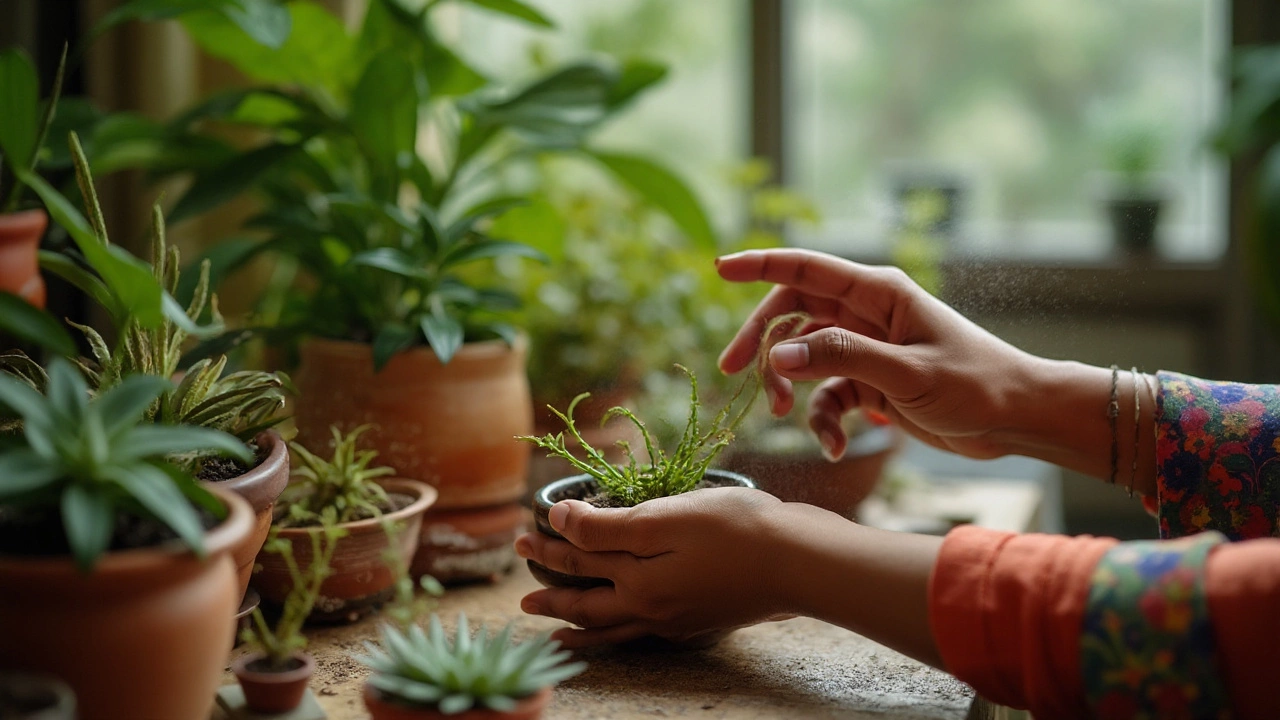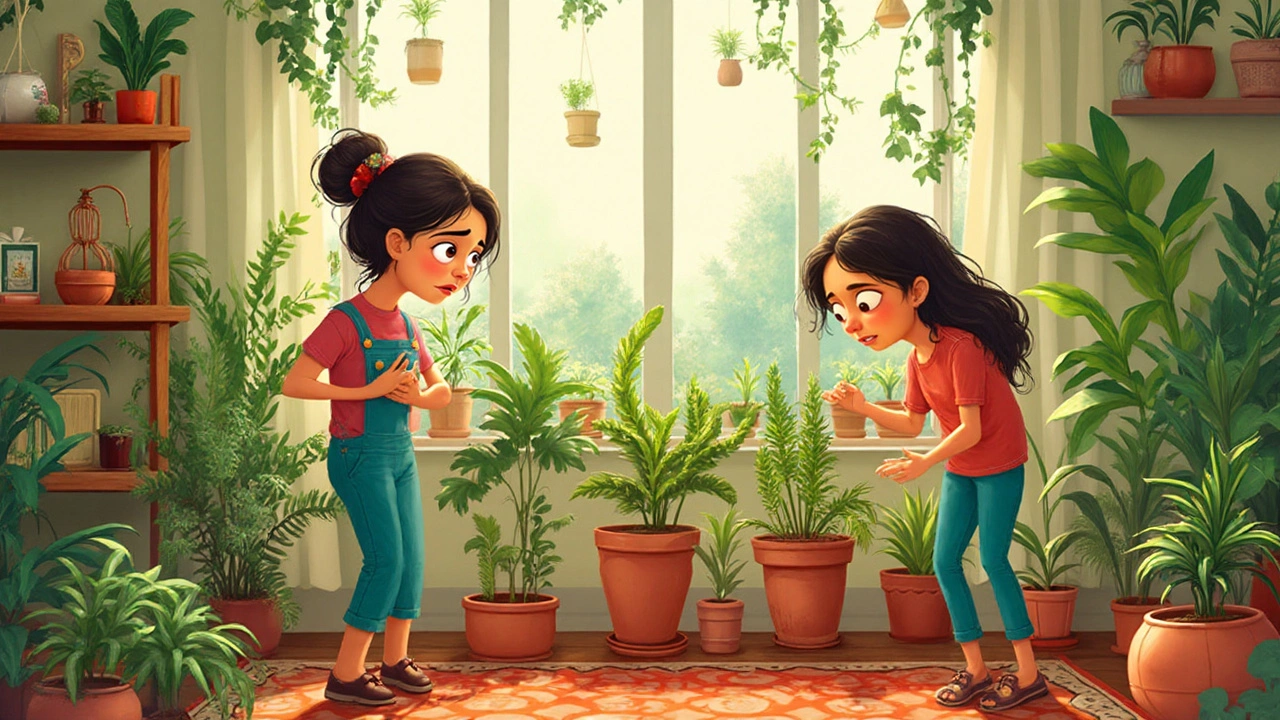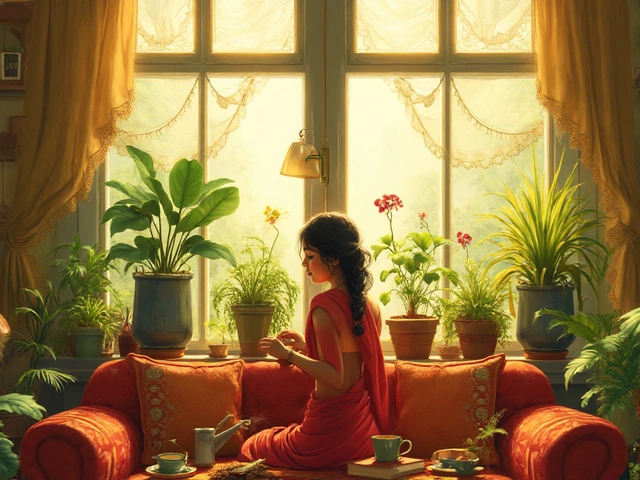Walk into any garden centre and you’ll spot them: the plants that make you roll your eyes, mutter “diva,” and check the price tag twice. Some plants really are fussy. Like that one friend who brings five-step skincare on a camping trip and asks for oat milk in their tea, there are houseplants that want it all—perfect light, humidity, lovingly filtered water, and yes, compliments. But what plant actually wins the title of “most needy?”
Defining ‘Needy’ in the Plant World
Before pointing fingers, let’s talk about what makes a plant needy in the first place. Does it throw a tantrum if you miss a watering or wilt dramatically just because you moved it eleven inches? You know, that sort of drama. When gardeners and plant collectors say a plant is ‘needy,’ we’re really talking about plants that demand strict routines, special conditions, and extra effort to prevent sudden brown leaves or death by neglect.
Needy can mean different things for different people. For a beginner, even a peace lily might seem dramatic. For more seasoned growers, true neediness starts with plants that need distilled water, daily misting, or lighting that mimics a rainforest in mid-afternoon. And there is, of course, the psychological pressure—no one wants to discover a prized plant on the edge because they took a weekend off.
So, needy plants are the divas of the houseplant world, with laundry lists of demands about light, water, temperature, nutrients, and often, even social interaction. If you get a thrill making soil mixes from scratch, hunting down whale-shaped humidifiers, and whispering sweet nothings to your plants, you’re in for a treat with these challenging species. But buckle up. Some of them have broken many a gardener’s heart.
The Titleholder: Calathea—Queen of Fussiness
Ask anyone who’s survived the heartbreak of brown leaves and crispy edges: Calatheas are notorious. Also known as the Prayer Plant family, Calatheas bring those jaw-dropping stripes, purple undersides, and artful leaf movements that make you pause during your 3am kitchen wanderings. But wow, are they high maintenance.
First, they’re thirsty—but get it wrong, and you’ll see yellow edges or droopy stems overnight. Soft water only! Tap water, especially in areas with hard minerals (like most of England), will ruin their vibe, causing leaf spots and stunted growth. Calatheas hate being cold. If your windows are drafty on an autumn night, they’ll curl up like they’ve just received bad news. But they’re not sunbathers. Direct sun will scorch, but too little, and their patterns fade. They need shade, but not darkness, warmth but not a sauna, and ‘rainforest’ humidity. In Brighton, that’s a problem. Average indoor humidity hovers around 45%, but Calatheas insist on 60-70%. Out come the pebble trays, misting bottles, special humidifiers, and hygrometers for daily checks.
Soil mix needs to drain, but not too fast—what they hate most is soggy feet, yet they’re always thirsty. Feed them the wrong fertilizer or forget for a month? They’ll protest with color loss or leaf curl. Even the pot makes a difference; too big and the roots stress out, too small and growth is stunted. Repotting? Calatheas sulk for weeks. Place them somewhere drafty or move them abruptly, and you’ll spend all autumn trying to revive tired leaves. That’s a dramatic routine even the pickiest of orchids rarely demand. No wonder needy plants are almost synonymous with Calathea in houseplant circles.

Other Top Contenders in the ‘Needy’ Olympics
It’s not all Calathea, though—the trophy for fussiness is hotly contested. Get ready for the runner-ups who need constant monitoring, from temperature tweaks to hand-pollination.
Orchids, especially the gorgeous but moody Miltoniopsis (Pansy Orchid), trip up newbies with their pastel flowers and strict watering regimes. Miss a day or overwater, and roots rot or leaves crinkle. They want bright, indirect light (rare on a UK winter morning) and room temperatures that don’t shift more than two degrees.
Fiddle Leaf Figs look like something from a Pinterest board—until their leaves drop. They’re emotional. Too much cold, dry air, getting moved, or waterlogged soil, and you’ll find yourself frantically Googling “fig tree depression.” A 2018 study from the RHS Plant Trials team in Wisley tracked Ficus lyrata for a whole year, and only two out of twenty mature plants handled central heating, window chill, and occasional missed watering without drama.
Maidenhair Ferns come next. Their fronds feel like green lace, and they’re drama queens about drafts, dry air, or any change. Miss a watering just once? The entire pot can crisp up in a matter of days. Seriously, these plants have no chill.
Other heartbreakers: The Zebra Plant (Aphelandra squarrosa) sports striking yellow flowers and glossy leaves but wants filtered water, high humidity, and regular feeding—or it fades and wilts in protest. And don’t forget Anthurium Clarinervium, with its velvety leaves and bold veins, which needs high humidity, chunky orchid bark soil, and filtered, tepid water to even consider thriving.
Each plant brings a different style of demanding care: high humidity, endless misting routines, or light levels that make you wish for more sunny windows. While beginners fuss over succulents, advanced collectors sweat over these green drama royalty, finding joy (and anxiety) in every new leaf.
Satisfying Their Needs: Survival Guide for Needy Plants
If you’re determined to keep a needy houseplant alive—and maybe even happy—you’re going to become a pro at microclimates, mineral-free water, and mood-setting for greenery. So let’s break it down:
- Watering routines: Ditch tap water for rainwater or filtered water. Some people actually leave tap water out overnight to evaporate chlorine, others grab their kettle after it cools.
- Temperature: Avoid drafts and sudden changes. Needy plants like things stable. A temperature range of 18–24°C is usually safe. Move plants away from radiators, heaters, and leaky windows, especially during Brighton’s stormy winters.
- Humidity: You may need a small humidifier. Pebble trays (trays with water and stones) work if you’re diligent. Mist leaves regularly, but not too much, because overdoing it leads to fungus.
- Soil and nutrients: Tailor your potting mix. For Calatheas, use a combination of peat-free compost, perlite, and coco coir for airy, moist soil. Fertilize lightly in the growing season. Less is more.
- Light: Read up on your plant’s species. For Calatheas, filtered light is key. Even a sheer curtain can help. If you desperately lack natural light, invest in a grow lamp—think of it as plant therapy.
- Repot with caution: Upsizing too soon is bad. Only change pots if the roots are visibly circling and growth has stalled. Stress from repotting often leads to grumpy leaves.
- Clean those leaves: Dust blocks photosynthesis. Gentle wiping (or a quick lukewarm shower) keeps plants looking sharp and breathing easy.
- Watch for pests: Spider mites, especially, love dry, struggling plants. Spot tiny webs or pale leaves? Rinse them thoroughly and increase humidity to deter bugs.
The trickiest thing isn’t just following routines; it’s tuning into the subtle hints from your plant. Is a leaf edge brown? Might mean too much tap water. Are new leaves stunted? Maybe it needs more humidity or different fertilizer. Sudden yellowing? Could be cold, drafts, or root rot. Sometimes, you just need to channel your inner plant detective.

Why Do We Bother With Such Fussy Plants?
If a drama queen houseplant keeps you up at night—for real, some people set alarms to mist their Calathea at 3am—you might wonder, “Why do we bother?” After all, low-maintenance snake plants or pothos grow almost anywhere and shrug off forgotten waterings. So what draws us to the challenge?
There’s a weird satisfaction in making a high-maintenance plant thrive. When a Calathea opens a new, flawless leaf, or an Anthurium finally throws out a heart-shaped bloom, you know you’ve done something right. It’s like baking sourdough: fiddly and unpredictable, but victory feels sweeter. Plus, fussy plants have personalities—some sprawl, some fold up at night (like Calathea’s ‘praying’), and some visibly perk up during thunderstorms. That sense of interaction makes the frustration worthwhile.
Fussy houseplants also act as ‘environment testers’—they’ll tell you when something’s off about your care, your water quality, or your indoor air. In Brighton, a sudden cold snap or burst of dry weather is written all over sensitive foliage, letting you tweak your space to suit all plants better. So, for the stubborn, curious, or dedicated, challenging houseplants turn caring for green friends into a fascinating, ever-changing puzzle.



